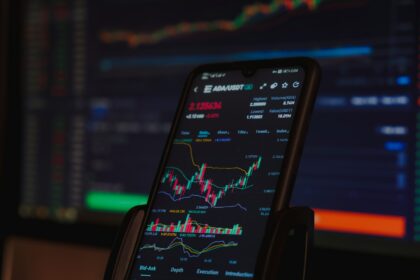To send funds instantly through your smartphone, start by selecting a reliable mobile wallet that supports the currency you intend to spend. These platforms let you manage balances, view transaction history, and receive transfers without needing physical cards or cash.
When making purchases, always verify that the vendor accepts digital currencies via their supported platforms. Authorizing transactions usually involves scanning QR codes or entering recipient addresses–steps designed to ensure accuracy and security during exchanges.
Practical experience is key: try transferring small amounts first to familiarize yourself with confirmation times and fee structures. This approach builds confidence and helps understand real-world applications beyond theoretical knowledge.
How to Use Crypto Payment Apps
To start spending digital assets through mobile platforms, first download a reputable wallet application compatible with your operating system. Setting up involves creating a secure private key or seed phrase, which serves as your unique identifier on the blockchain network and enables control over your funds. Always back up this information offline to avoid irreversible loss.
Once the wallet is configured, link it to supported services or merchants accepting digital currency transactions. Many applications facilitate peer-to-peer transfers, allowing users to send tokens directly by scanning QR codes or entering recipient addresses manually. Transaction fees and confirmation times vary depending on the underlying blockchain protocol and network congestion.
Steps for Real Asset Spending via Mobile Wallets
- Create an account: Install the software from official sources, then generate a new wallet with strong encryption options enabled.
- Add funds: Deposit tokens from exchanges or other wallets; some platforms allow fiat conversions within the app for convenience.
- Initiate payment: Choose the sending option, input recipient details accurately, specify amount, and review applicable fees before confirming.
- Verify transaction status: Monitor confirmation on the blockchain explorer linked inside most apps to ensure completion.
The choice of currency impacts spending efficiency: stablecoins offer minimal volatility ideal for daily use, while cryptocurrencies like Bitcoin may experience price fluctuations affecting purchasing power. Additionally, privacy-oriented solutions such as Monero provide enhanced anonymity but require compatible merchant acceptance.
Security protocols integrated into these mobile tools often include biometric authentication and two-factor verification to mitigate unauthorized access risks. Users should also be cautious about phishing attempts disguised as legitimate payment requests. Regular updates from developers patch vulnerabilities and improve user experience.
Practical adoption examples include paying for online subscriptions, tipping content creators instantly, or settling invoices across borders without traditional banking intermediaries. Businesses increasingly integrate these methods to streamline cross-border commerce, reduce transaction costs, and expand customer bases globally by accepting decentralized monetary units through dedicated software interfaces.
Setting Up Your Wallet
To begin with, selecting a reliable mobile wallet is fundamental for managing your digital assets securely. Focus on applications that offer robust encryption methods and support multi-factor authentication to protect your funds from unauthorized access. Popular wallets like Trust Wallet or MetaMask provide intuitive interfaces combined with advanced security protocols, making them suitable both for beginners and experienced users.
Once the application is installed, creating a new wallet involves generating a unique seed phrase–a sequence of 12 or 24 words–that serves as the master key to access your assets. It is imperative to store this phrase offline in a secure location, since anyone possessing it can control your funds. Avoid saving it digitally or sharing with third parties to minimize risks associated with hacking or phishing attacks.
Understanding Wallet Features and Configuration
After initialization, familiarize yourself with key functionalities such as sending, receiving, and tracking transactions on blockchain networks. Many platforms allow customization of transaction fees depending on urgency; higher fees typically result in faster confirmation times. For instance, Ethereum wallets often let users set gas prices manually, providing flexibility in real spending priorities.
Apart from basic operations, some wallets support integration with decentralized exchanges (DEXs) or decentralized finance (DeFi) services directly within the interface. This feature enables asset swapping without transferring funds externally, reducing exposure to additional transaction costs and enhancing convenience during everyday spending activities.
- Backup Options: Create encrypted backups of your wallet data when available to restore access if your device is lost or damaged.
- Security Settings: Enable biometric verification or PIN codes for app access.
- Network Selection: Choose compatible blockchains supported by the wallet for asset management.
Mobile wallets vary in their approach toward custodianship–some are non-custodial, meaning only you control private keys locally; others hold keys on behalf of users but may introduce counterparty risk. Understanding this distinction helps align choice with personal security preferences and intended usage patterns related to real-world spending scenarios.
In conclusion, setting up an effective wallet requires careful attention to security details while exploring functional features that enhance daily interaction with digital currencies. Regularly updating software versions ensures compatibility with emerging standards and patches vulnerabilities. By systematically progressing through these steps, individuals become confident stewards of their monetary resources within mobile financial ecosystems.
Funding Crypto Payment Apps
To add funds to your digital wallet within transactional platforms, begin by selecting a compatible funding source such as a bank account, debit card, or another digital wallet that supports fiat-to-digital asset conversions. Many services integrate with traditional banking rails via APIs to enable instant transfers, while others require manual deposits through wire or ACH transfers. For example, platforms like Coinbase allow users to link bank accounts securely and initiate transfers that typically clear within 1-3 business days, enabling swift access to assets for spending.
Another method involves topping up wallets directly through peer-to-peer exchanges or cryptocurrency ATMs, which convert physical currency into blockchain-based tokens. This approach suits those without direct bank integration or who prefer cash transactions. In addition, some solutions support cross-platform transfers where assets can be moved between wallets using unique public addresses; however, users must confirm compatibility and network fees before proceeding.
When replenishing balances on these platforms, understanding the difference between hot and cold storage is critical. Hot wallets remain connected online, allowing immediate use of funds but exposing them to cybersecurity risks. Cold wallets store keys offline and are typically used for long-term holdings rather than frequent spending. Therefore, maintaining an optimal balance in your accessible wallet ensures smooth transactions without compromising security. For instance, Binance’s Trust Wallet offers seamless integration with its exchange to manage both quick payments and secure storage efficiently.
In practical terms, initiating a transfer usually involves scanning QR codes or entering alphanumeric wallet addresses accurately. Missteps here can lead to irreversible loss of assets due to blockchain immutability. Platforms often provide detailed transaction confirmations and real-time status updates on fund arrivals. Monitoring network congestion and associated gas fees also helps optimize timing of deposits–Ethereum network fees can fluctuate dramatically based on demand, influencing when it’s most cost-effective to fund your account for subsequent usage.
Making Transactions Securely
To ensure the safety of your transactions, always verify that the mobile platform handling your digital assets employs strong encryption protocols such as TLS 1.3 and end-to-end encryption for wallet communications. Confirm that the interface supports multi-factor authentication (MFA), preferably combining biometric verification with a PIN or hardware token. This layered approach significantly reduces risks associated with unauthorized access.
When transferring funds, double-check the recipient’s address using QR codes or copy-paste methods to avoid manual entry errors. Many reliable wallets provide transaction previews highlighting fees and network confirmation times–review these details carefully before approving any transfer to prevent unintended losses or delays.
Security Features in Wallet Solutions
- Cold Storage Integration: Some advanced wallets allow offline storage of private keys, isolating them from internet exposure and reducing hacking chances.
- Seed Phrase Backup: Securely storing recovery phrases offline is essential; never share or store them digitally without encryption.
- Transaction Alerts: Real-time notifications on incoming and outgoing transfers help users spot suspicious activities quickly.
An illustrative case is the implementation of hierarchical deterministic (HD) wallets, which generate new addresses for each transaction. This method enhances privacy by preventing address reuse and complicates tracking attempts by malicious actors.
The choice between custodial and non-custodial platforms impacts security responsibilities. Custodial services manage private keys but require trust in third parties, whereas non-custodial wallets place full control–and risk–on users themselves. For beginners, starting with reputable custodians featuring insurance coverage can mitigate potential financial threats while learning operational nuances.
The practical application of these principles enables safer exchanges even for newcomers navigating unfamiliar territory. By consistently applying such measures during each session on a mobile interface or desktop environment, users cultivate habits that protect their holdings against common vulnerabilities like phishing attacks, malware infiltration, and social engineering scams.
Tracking Transaction Records in Mobile Wallets
Maintaining a transparent ledger of your blockchain spending within mobile wallets is critical for both personal finance management and regulatory compliance. These tools provide detailed logs that allow users to verify every outgoing or incoming transaction, including timestamps, amounts, and counterparties. By regularly consulting these records, individuals can identify unauthorized activities early and adjust their asset allocation accordingly.
Advanced wallets integrate features such as tagging transactions, categorizing expenses, and exporting histories for external analysis. For instance, some platforms support CSV exports enabling detailed spreadsheet reviews or integration with accounting software–facilitating a seamless audit trail. This granular visibility transforms abstract token movements into tangible financial insights, empowering users to make data-driven decisions about their digital asset flows.
Looking Ahead: Enhanced Transparency and Automation
- Real-time Analytics: Emerging solutions will embed AI-powered analytics directly within the wallet interface to flag anomalies or suggest optimized spending patterns without needing third-party tools.
- Cross-platform Synchronization: Future developments promise unified histories across multiple devices and decentralized applications (dApps), ensuring consistent tracking regardless of where transactions originate.
- Regulatory Integration: Enhanced compliance modules will automatically generate reports aligned with jurisdiction-specific tax codes, simplifying obligations for users globally.
- User-centric Privacy Controls: Innovative encryption techniques will allow selective sharing of transaction data–preserving confidentiality while offering transparency when required.
The practical implication is clear: mastering transaction history monitoring within mobile wallets elevates everyday blockchain interactions from opaque exchanges to structured financial behavior. As these systems evolve, users will gain unprecedented control over their digital spending patterns–translating complex on-chain data into accessible real-world knowledge that supports smarter asset stewardship.





